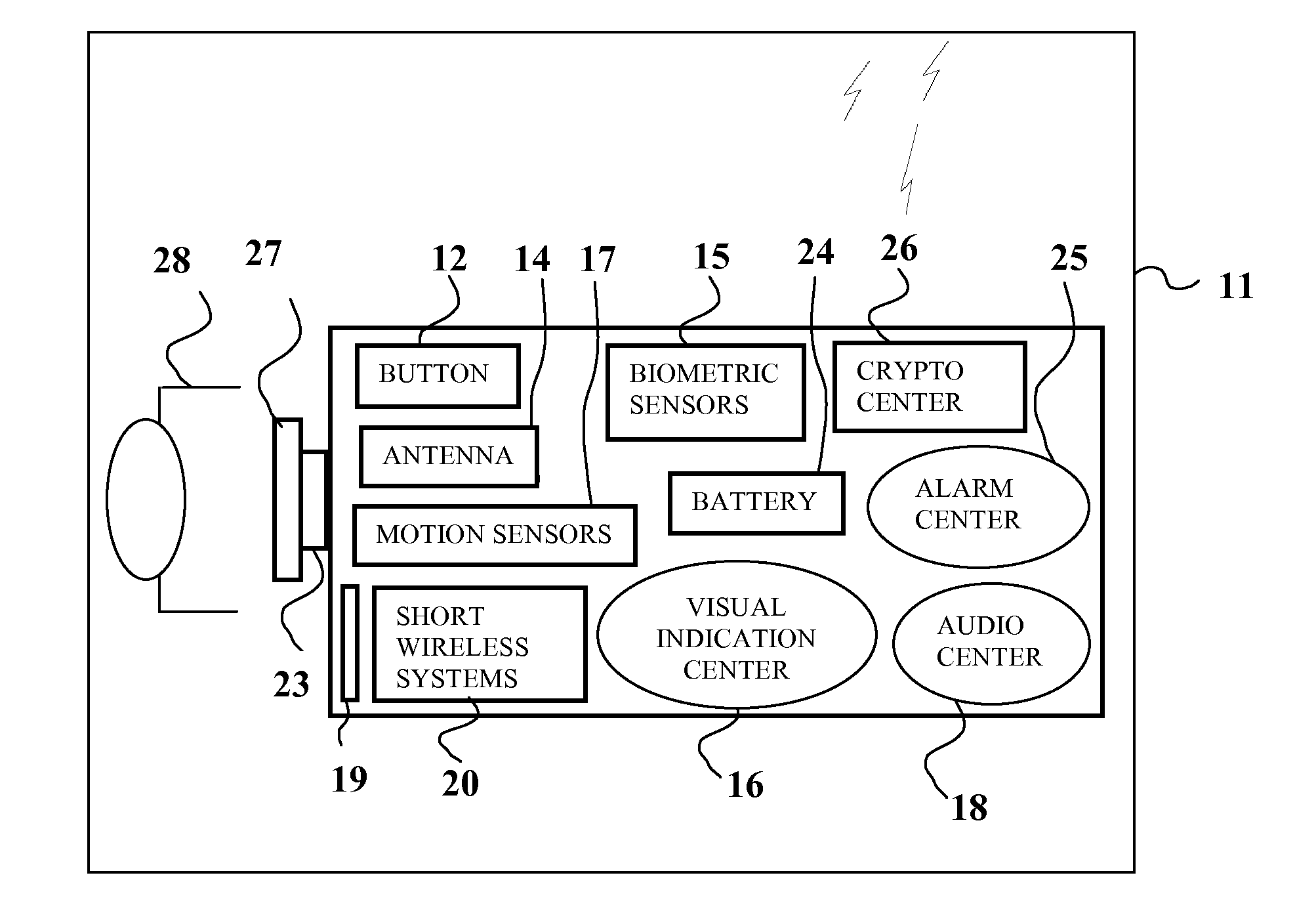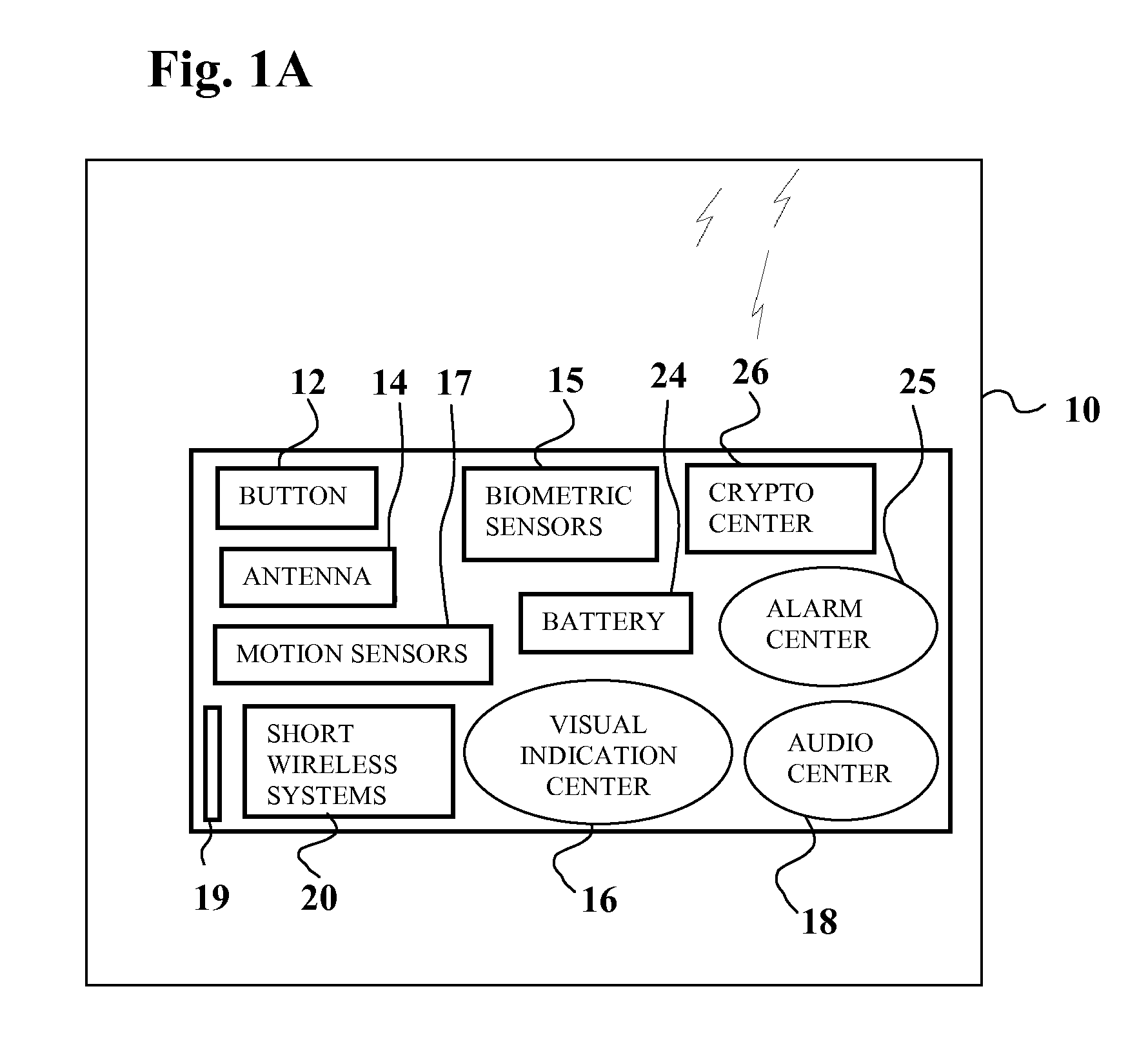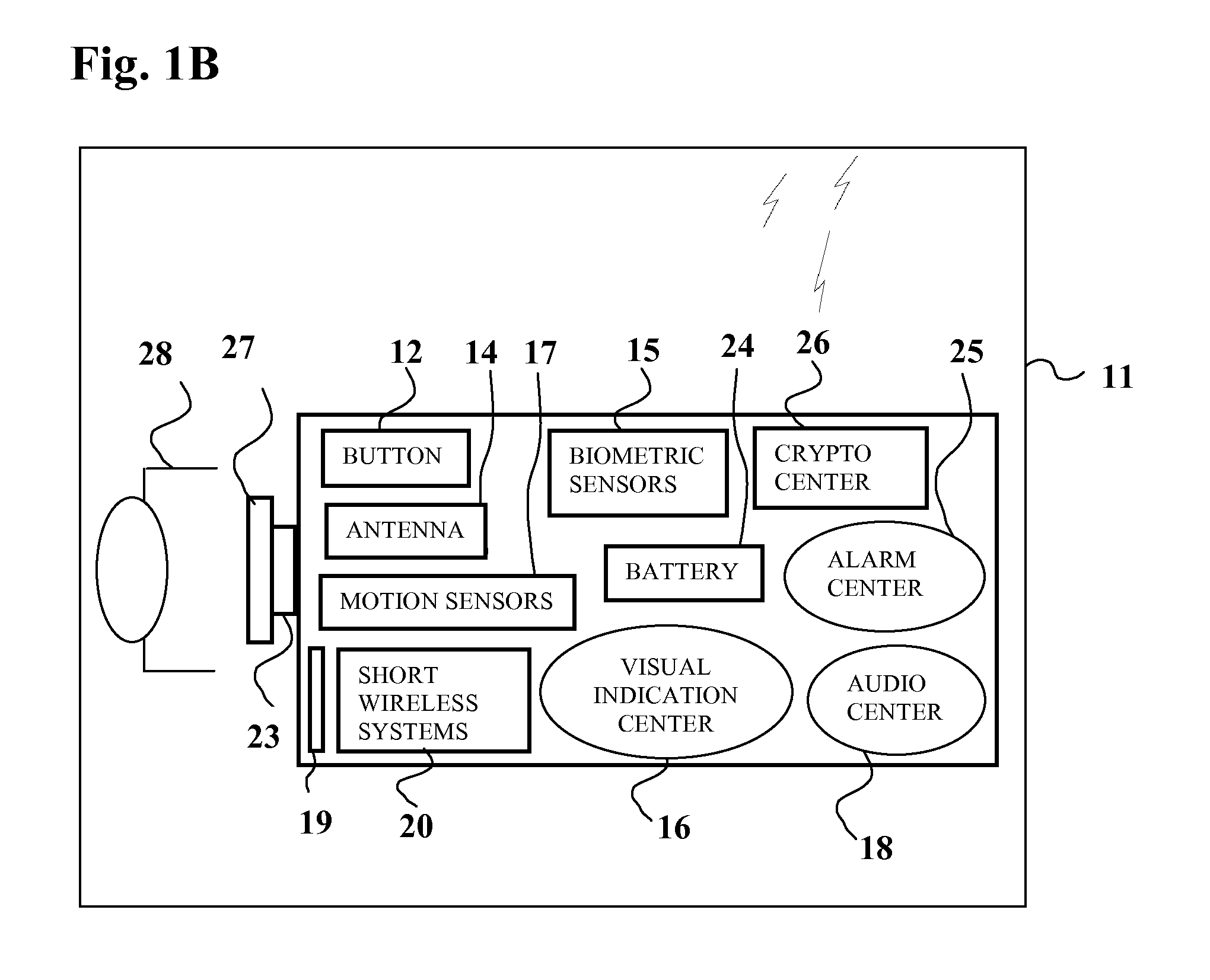System for mobile security
a mobile security and system technology, applied in the field of mobile security, can solve the problems of hardware authentication tokens, poor user selection, hardware tokens sharing a limitation with passwords, etc., and achieve the effect of high correlation
- Summary
- Abstract
- Description
- Claims
- Application Information
AI Technical Summary
Benefits of technology
Problems solved by technology
Method used
Image
Examples
Embodiment Construction
[0051]The most common model for PC application login generally relies on a set of user name and password that the user enters in a login screen. Once the user name and login are authenticated, the user gains access to the application.
[0052]This model has presents a few security problems. For example:
[0053]Multiple users can login with the same username / password,
[0054]A person can steal a username and password combination without the account owner noticing. The person can login into the system undetected.
[0055]For mobile phone applications, the phone generally goes to sleep mode after one minute of user inaction, and later, the user has to login again. For frequent users of mobile applications, this process is inconvenient and wastes them a lot of time.
[0056]The current invention utilizes features of short wireless transceivers (such as BLUETOOTH, ANT, WIBREE, NFC, ZIGBEE, etc.) to provide secure automatic access to mobile payment, mobile banking and mobile CRM applications thus incr...
PUM
 Login to View More
Login to View More Abstract
Description
Claims
Application Information
 Login to View More
Login to View More - R&D
- Intellectual Property
- Life Sciences
- Materials
- Tech Scout
- Unparalleled Data Quality
- Higher Quality Content
- 60% Fewer Hallucinations
Browse by: Latest US Patents, China's latest patents, Technical Efficacy Thesaurus, Application Domain, Technology Topic, Popular Technical Reports.
© 2025 PatSnap. All rights reserved.Legal|Privacy policy|Modern Slavery Act Transparency Statement|Sitemap|About US| Contact US: help@patsnap.com



